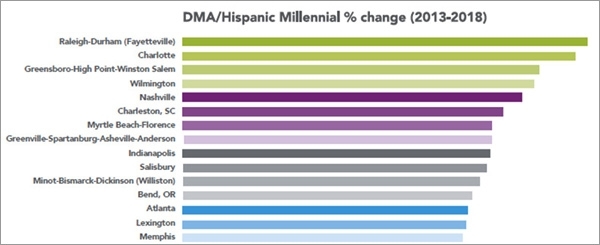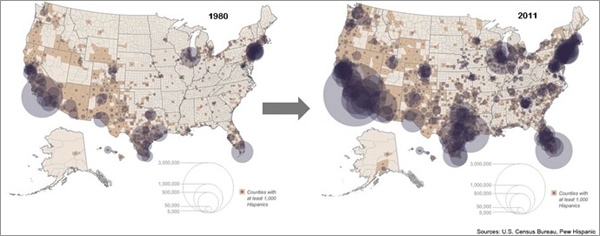Two of the hottest topics in Hispanic marketing in 2014 have been the “Total Market Approach” and Hispanic Millennials. The emergence of the Total Market Approach in
the last couple of years has kicked off a heated debate in the marketing industry around which marketing model makes the most sense:
• Multicultural Marketing – targeted marketing efforts to specific, clearly defined ethnic groups
• Total Market Approach – one marketing program designed to reach all consumers, across general and ethnic markets
• Cross-Cultural Marketing – one marketing program that leverages ethnic markets to reach across ethnic and
general markets
I believe, and many of my industry colleagues concur, that all three models are relevant today. However, the unresolved question is which, if any of these
marketing models, is the model of the future. The answer has broad implications for all marketers.
The answer lies in the future of the Hispanic market,
the largest ethnic group in the U.S. that ultimately drives most trends in the broader multicultural marketing business. Here are two things to understand about the future of the Hispanic market:
Hispanic Millennials – the Hispanic consumer of the future
Emerging Hispanic Markets – the
geographic distribution of Hispanics
When we look at emerging Hispanic markets (which I’ve discussed in past articles), we see Hispanics are increasingly immigrating to nontraditional markets
outside the Hispanic immigrant gateways of Los Angeles, New York, Miami and Chicago.

The result is
fast-growing “emerging” Hispanic markets in places like Atlanta, Washington, D.C., and Seattle. However, the growth in these emerging Hispanic markets is heavily driven by Hispanic
Millennials. In particular, growth is driven by foreign-born Hispanic Millennials.

We know from
the Hispanic Millennial Project that foreign-born Hispanic Millennials are different from their U.S.-born counterparts. This is in sharp contrast to established, Hispanic “Mega Markets”
like Los Angeles and Miami that are seeing their slower Hispanic population growth driven by U.S.-born Hispanic Millennials who make up the majority of Millennials in many of these markets.
The interconnected trends among Hispanic Millennials and emerging Hispanic markets indicate the development of two distinct Hispanic markets. One is the new “minority”
immigrant-driven Hispanic population centers in places like Atlanta and Charlotte, N.C., driven by foreign-born Hispanic Millennials. The other is native-born Hispanic majority markets, like Los
Angeles and San Antonio, where a new fusion culture is taking hold, driven by U.S. born Hispanic Millennials. Which brings us back to the Total Market Approach question: Which model makes sense for
the future?
I see two models for two Hispanic markets:
Cross-cultural Approach for ”Fusion” mega-markets
Multicultural (ethnic-specific) approach for Emerging Markets
The emergence of fusion Hispanic mega-markets,
where U.S.-born Millennials are the majority, will be best served with a cross-cultural approach. In markets like Houston and Miami, one marketing program that leverages ethnic market insights (i.e.
Hispanic Millennial insights) to reach across the ethnic and general markets will be the most effective. In these markets, it will be key to leverage Hispanic Millennial cultural insights and points
of cultural tensions highlighted in recent Hispanic Millennial research that can “cross over” to non-Hispanic Millennials. While English communications will be effective in these markets,
Spanish language will still be relevant.
Conversely, targeted marketing efforts to specific, clearly defined ethnic groups will be most effective in emerging Hispanic markets like
Charlotte and Atlanta, where growth is being driven by foreign-born Hispanic Millennials. In these markets, the “separate and distinct” Hispanic market opportunity will be well-suited to
targeted ethnic-specific initiatives (i.e. the “multicultural” model), where Spanish language is key.
While the emergence of two Hispanic markets may
make Hispanic marketing efforts more complex, it will be necessary to reach the increasingly complex Hispanic population of 50+ million.